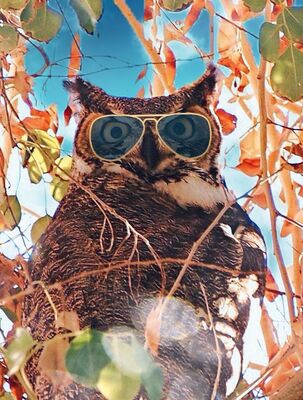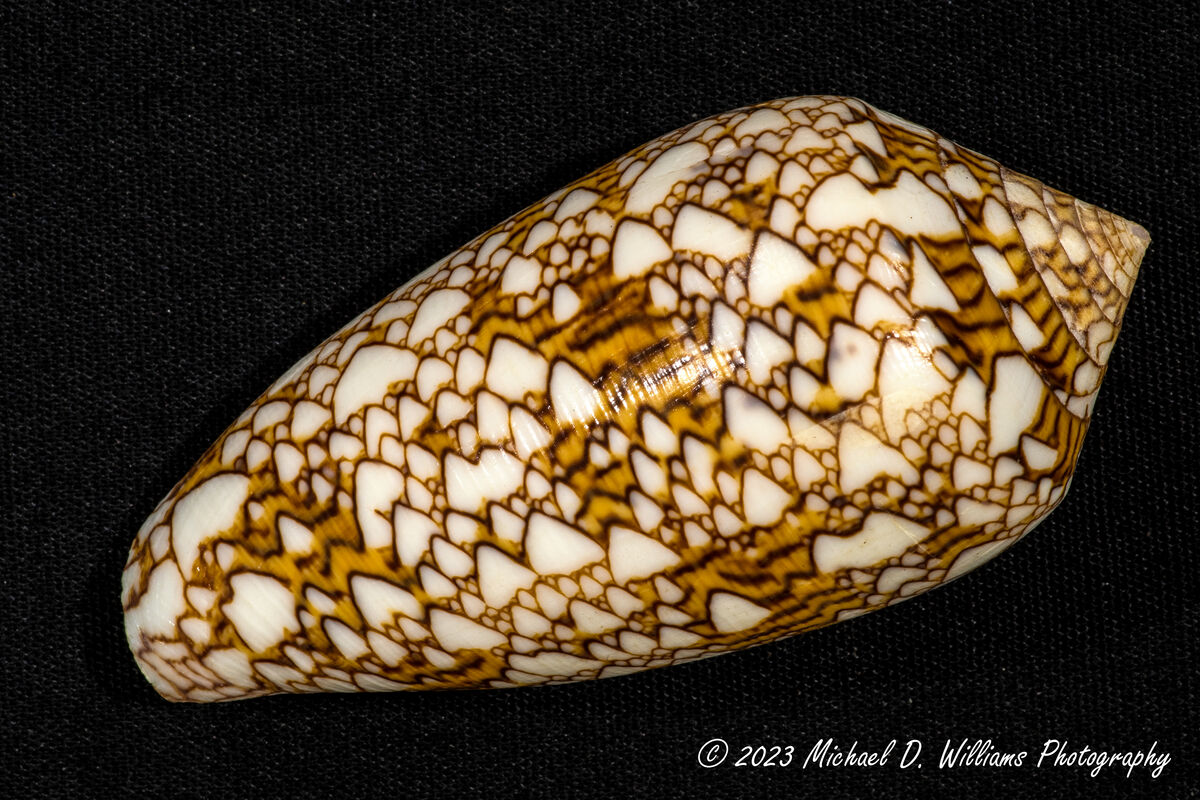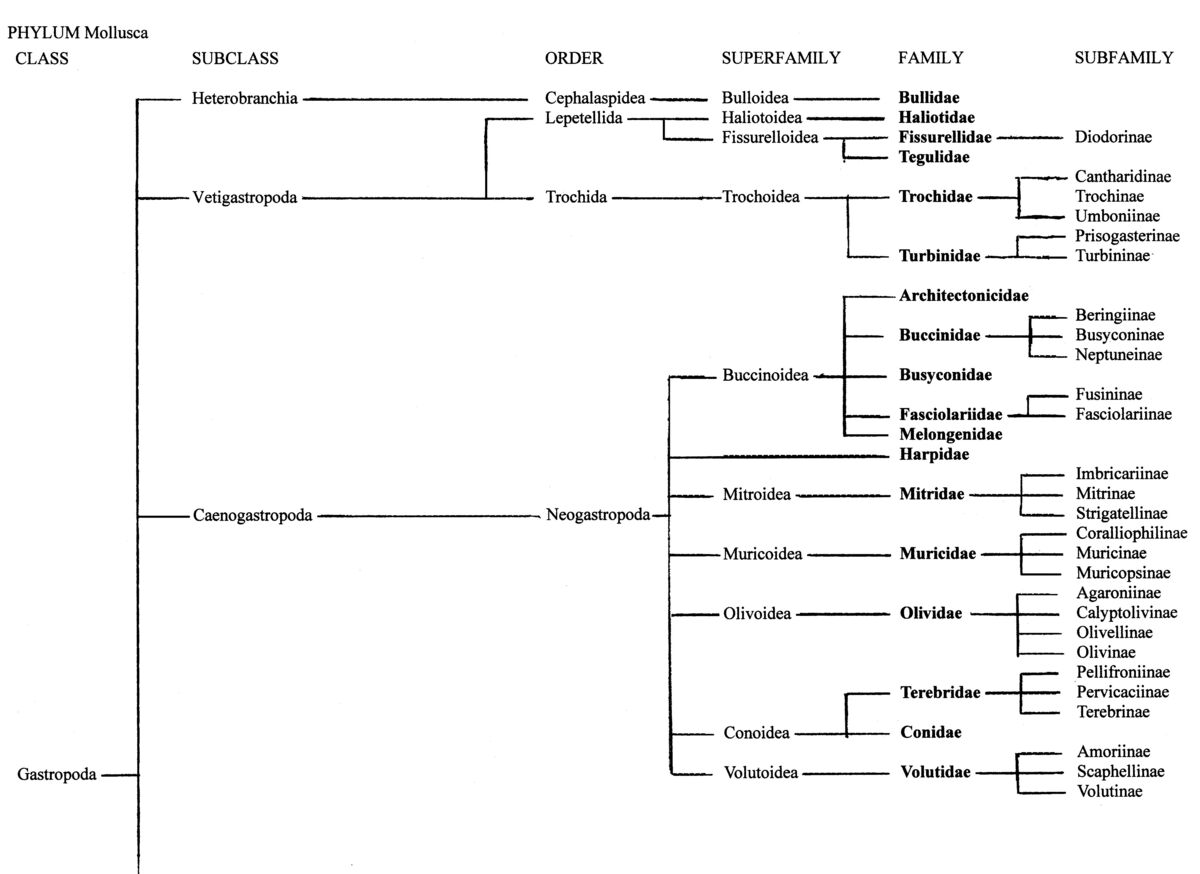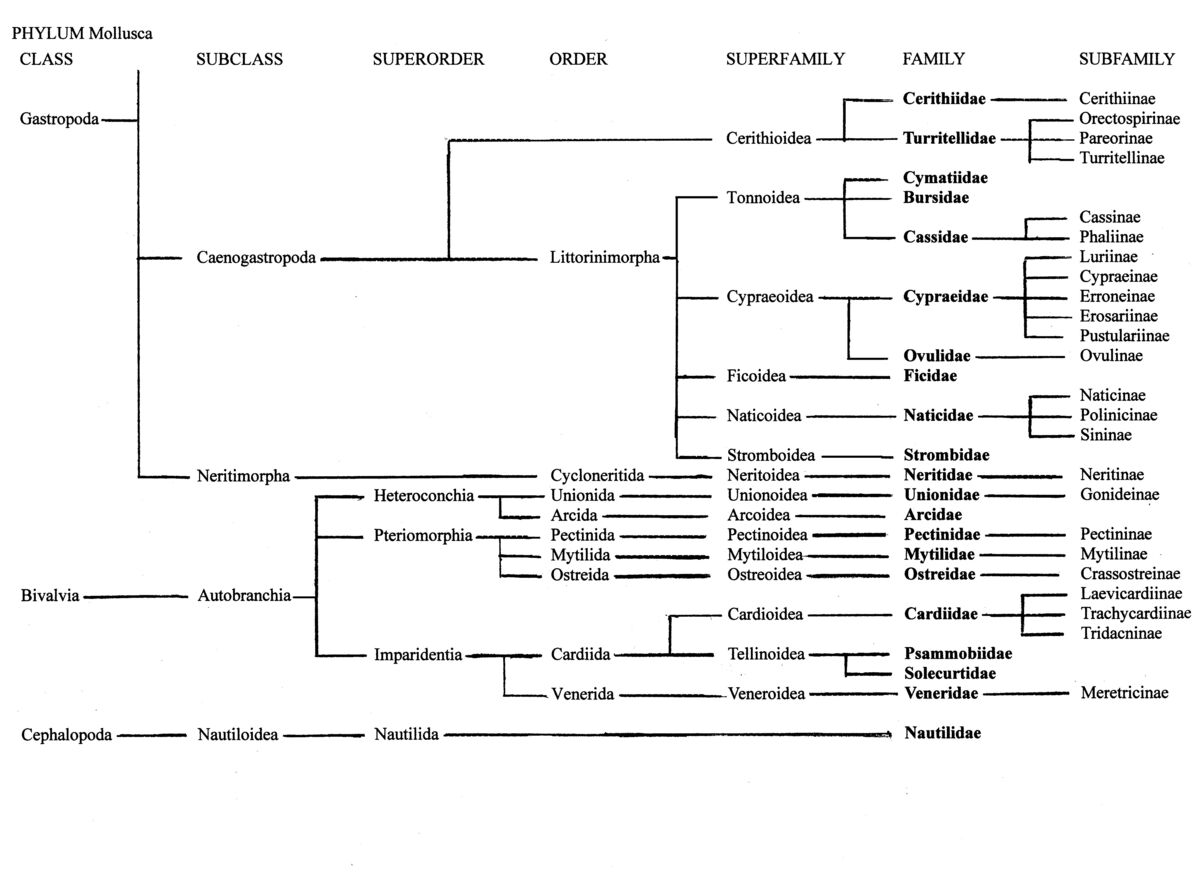Seashells With Similar Tent, Pyramid, Teepee Patterns On Them From Four Families
Sep 26, 2023 18:51:00 #
The previous two postings I did of Seashell generated some nice comments and interesting comments about the patterns on the Arabic Cowrie and the Map Cowrie. Some thinking it looks like writing – it does to me too. The designs and colors are of course controlled by genes of the Gastropods. This batch I would like to show that some patterns are common to unrelated species in different Families. Is there a common survival value to these patterns – convergent evolution. I don’t know but I find it amazing. Here are a few examples of a “tent”, “pyramid”, or “teepee” pattern among six specimens of five different species from four different families. There may be better example specimens in existence, but these are the best ones I own.
Similar to my last batch these photos were taken vertically using a Gitzo Head, Side-Arm, and Legs, Black Background Cloth on Boxes, Pentax K-1 mark II Camera, (this time) smc-Pentax-D FA 100mm F2.8 Macro Lens, (not ideal) 5000k Ceiling Lamps. Exposures were Full Manual Exposure & Focus, ISO 200, ƒ/22, 5 s. These were all rather small shells so I might have gotten away with ƒ/16 and less possible diffraction, but I am shooting so close that there is little depth of field.
Families:
1. Volute Shell
2. Cone Shell
3. Olive Shell
4. Cone Shell
5. Conch Shell
5. Volute Shell
Similar to my last batch these photos were taken vertically using a Gitzo Head, Side-Arm, and Legs, Black Background Cloth on Boxes, Pentax K-1 mark II Camera, (this time) smc-Pentax-D FA 100mm F2.8 Macro Lens, (not ideal) 5000k Ceiling Lamps. Exposures were Full Manual Exposure & Focus, ISO 200, ƒ/22, 5 s. These were all rather small shells so I might have gotten away with ƒ/16 and less possible diffraction, but I am shooting so close that there is little depth of field.
Families:
1. Volute Shell
2. Cone Shell
3. Olive Shell
4. Cone Shell
5. Conch Shell
5. Volute Shell
1. Volute
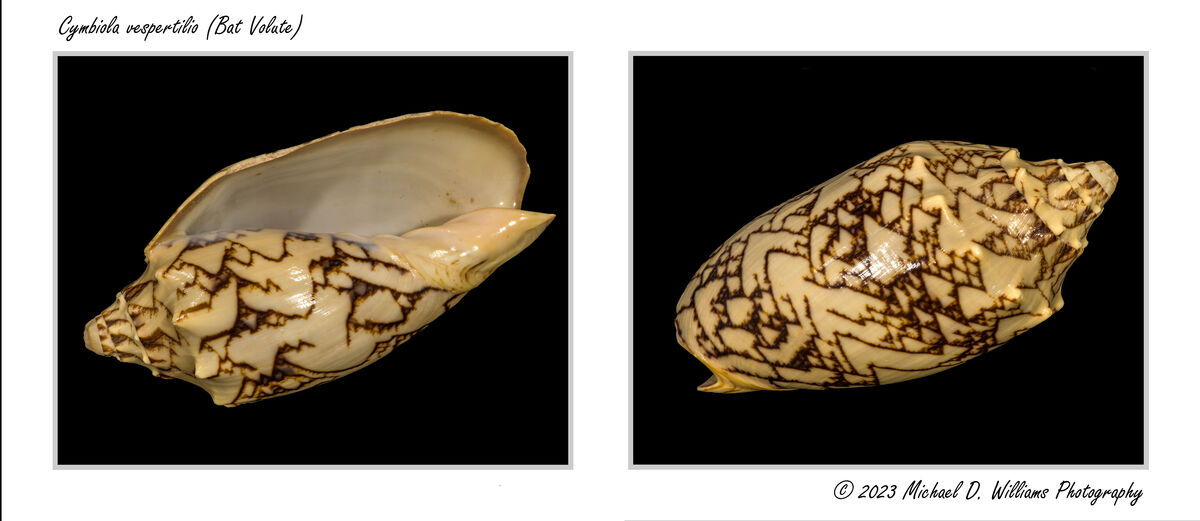
(Download)
2. Cone
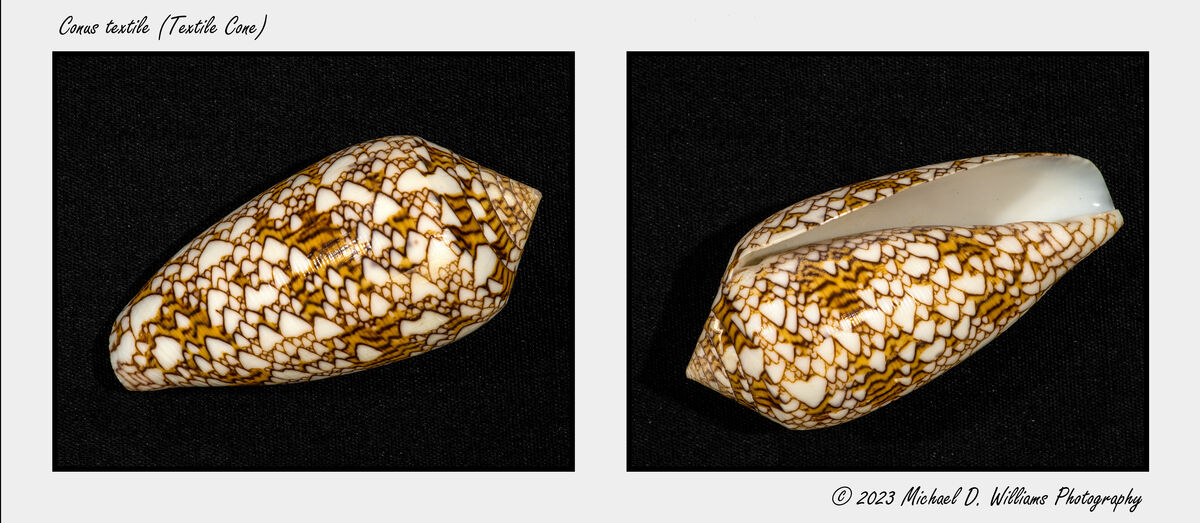
(Download)
3. Olive
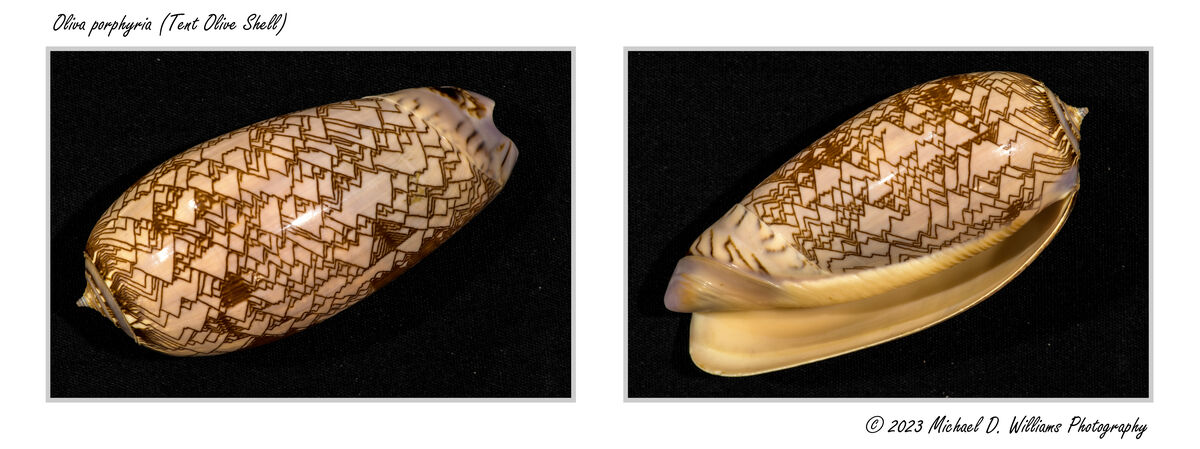
(Download)
4. Cone
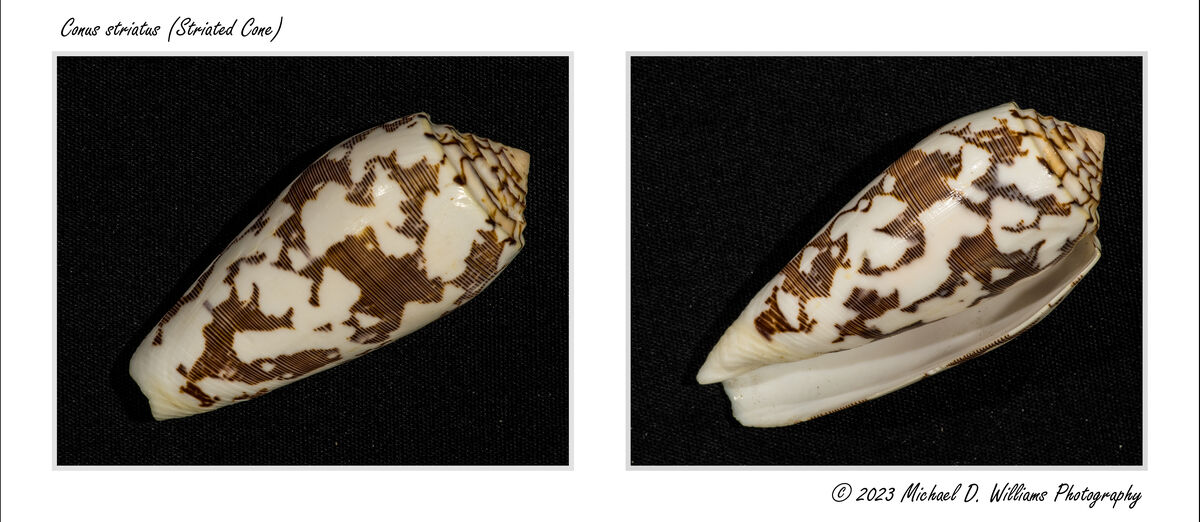
(Download)
5. Conch
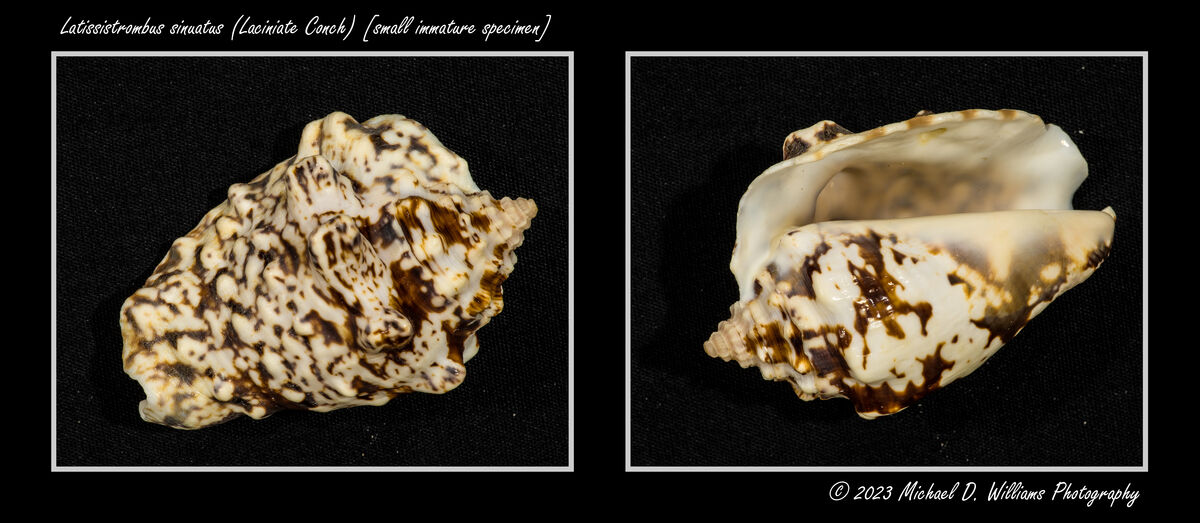
(Download)
6. Volute
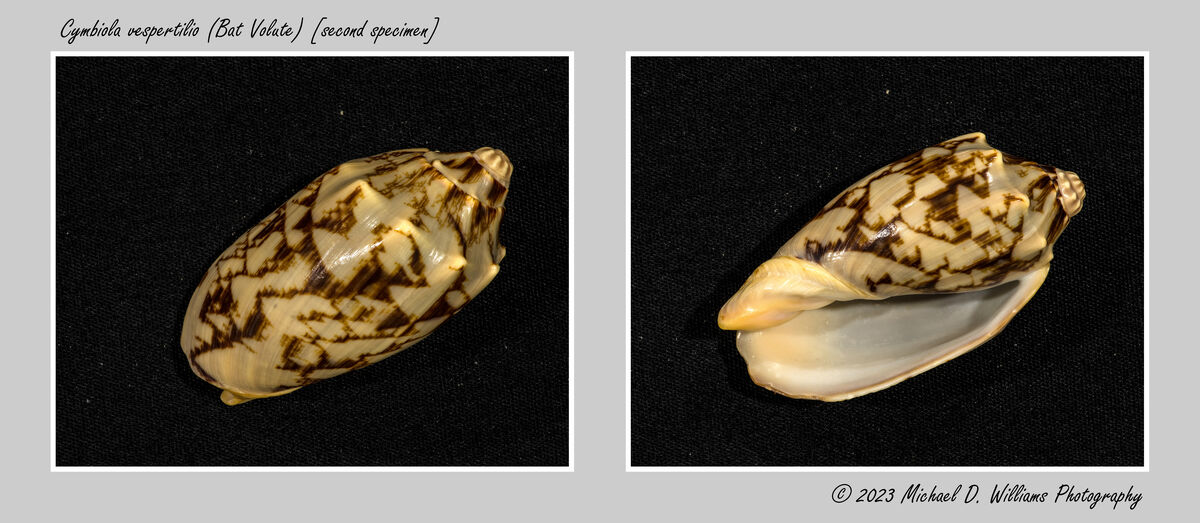
(Download)
Sep 27, 2023 08:29:30 #
Sep 27, 2023 08:33:08 #
Sep 27, 2023 12:59:06 #
These are great! I'm also interested in the shared similarities between different families. How did you acquire these shells? I mentioned in one of your earlier posts that I collected quite a few while SCUBA diving. Did you collect them or buy them?
Sep 27, 2023 14:11:00 #
Retired CPO wrote:
These are great! I'm also interested in the shared similarities between different families. How did you acquire these shells? I mentioned in one of your earlier posts that I collected quite a few while SCUBA diving. Did you collect them or buy them?
These six Seashells were most likely purchased. Some of my shells were also given to me. These are all from the Indo-Pacific Oceans, and Western Pacific far from California where I live. In my collection I have some shells from most places around the world. But my collection is modest from what some collectors have. I have also picked up dead shells from various Southern California Beaches over the years. Some of these are in nice condition others are dismal. The vast majority of Alta California Mollusk species are not nearly as showy as tropical ones from the Pacific or Atlantic Oceans. You may know more about that than I do. LOL


There are many other seemingly common or shared features or traits among families of Seashells. There as one can see in my photos a similarity at one end of the underside of both the Olive and Volute shells. I have not yet checked to see how the Olive and Volute are related. I may be able to find a Phylogenetic tree Map or genetic Cladogram Map for Gastropods. I more or less know more about Mammalian families than others. Sounds like fun, right? Thanks for the comments. Until next time.

Sep 27, 2023 15:16:50 #
lamiaceae wrote:
These six Seashells were most likely purchased. S... (show quote)
Yes, most of my diving has been in the western Pacific Ocean and that's where most of my collection came from, but I have dove quite a bit in the Carribean. Although that was, for the most part on dive trips with "dive masters". On the most recent dives, shell collecting has been frowned upon, understandable where there are a lot of divers on heavily used dive sites. I still collect, though on a limited basis, when I do self guided, do-it-yourself dive trips. I LOVE diving in the Philippines!!

And, yes, I do think it's fun, and interesting! I have a Bachelor's in Biology.
Sep 27, 2023 15:48:26 #
Back in the 1970’s I lived on Oahu for a total of seven years and during that time got hooked on shell collecting for a short period until I warched some of the more avid collectors using crowbars to turn over coral formations to get at small indigenous murex {pele) that made it’s home under flat-laying corals. That wrecking crew mentality totally ruined it for me. Unfortunately it still exists in many wildlife scenarios imaged by photographers today. “Take only images and leave only footprints.” (I don’t remember who I’m quoting… it remains a great motto.) sorry, end rant.
Sep 27, 2023 16:20:47 #
lamiaceae wrote:
The previous two postings I did of Seashell genera... (show quote)
Would like to see some of these enlarged



Sep 27, 2023 17:18:18 #
Retired CPO wrote:
Yes, most of my diving has been in the western Pac... (show quote)
Cool. I have a BA in Biology from California State University, Fullerton. I did not study Seashells there, that was all as a hobby.
Lots of species of Mollusca are on various Endangered Species Lists world wide. Locally where I am taking live Pismo Clams is a no no. Legally they must be at least 4.5 inches in diameter, few are even 3.5" these days. And on top of that you would have to have a fishing permit and they would limit how many one could take (digging up with a clam rake or other means), per day. So today "Pismo Clam Chowder" does not have Pismo Clams in it! Sadly due to Climate Change warming waters excessive algal growth is producing toxins (a couple different ones) that are poisoning Shellfish and Mammals as well. Even the poor clams are sick and dying in many places along the California Central Coast. There are disoriented Pinnipeds on our beaches as well.
No luck on comparing Families yet. I am finding that Clade Phylogeny uses their own terminology and not the regular Orders and Families. Oddly they do compare two organisms using the recognized Genus-Species scientific names for Mollusks. I just got a clue what to look for from an old (1962) lay Shell Guide I have. I now found a technical scientific journal article that may clarify a few things to me. I'll have to read it first.

Sep 27, 2023 17:54:01 #
srg wrote:
Would like to see some of these enlarged 





Wow, should I take that as a compliment? If so thank you. If you download and then click zoom in or enlarge, that is not enough for you? As I noted in my replies to the earlier Cowrie set, the design and pigments are below the surface and there is a bit of refraction and dispersion. So looking at them huge is not like a "crusty" shell or flower or landscape. Since I have not printed these images as say 11x14" prints I am a bit curious myself what a lot of my photos look like "published" large!
For most of my recent Seashell images I have been processing them like this: Shot RAW with 36MP Camera; Processed via ACR, then Ps CS6 (yes, I know it is old); at 16-bit, 300 ppi; I crop the original huge image to 10x12.5" then I add the 0.25" to the Canvas, then a 2.5" contrasting additional canvas as a fake mat border; add Title & Copyright with Name, Then I resize the short side to 10" (3000x3588 pixels). I then Save As these as the largest JPGs for Sharing. These "final" image files are about 3 to 6 MB.
I'll reprocess one of my Raw files full size and see if I can post it as a Reply to your question a bit later. Note I shot these on a black cloth and the fabric does show.


Sep 27, 2023 18:26:05 #
srg wrote:
Would like to see some of these enlarged 





Here you go, one 24MB JPG 16x24" image. If there is anything wrong with the sharpness it is due to Diffraction at ƒ/22. So it is possible I might have gotten a bit more resolution at ƒ/16 if that would not have cost me in DoF.
Sep 27, 2023 18:46:02 #
Sep 29, 2023 20:14:19 #
Retired CPO wrote:
These are great! I'm also interested in the shared similarities between different families. How did you acquire these shells? I mentioned in one of your earlier posts that I collected quite a few while SCUBA diving. Did you collect them or buy them?
Retired CPO, Considering I have been posting pictures of my Seashells I thought I might share this. I found a little bit of information about the "Comparative Phylogeny" of Mollusk Families. I am not finding as much information on the WWW as I thought I would about this. Seems I would have to take a Malacology Systematics Course to find out in detail what I am curious about. Using information on the World Register of Marine Species (WoRMS) for the species I have in my Seashell Collection, I manually constructed a Phylogenic Flow Chart of the Mollusk Families I have in my Shell collection. This only includes the Class, Subclass, Order, Superfamily, Family, and where they exist, Subfamily. I do not include example Genus & species names. I also left out some taxonomic group levels such as Subterclass, Infraclass, and Tribe. Sorry everything is using the Latin Scientific names for the Families. It does represent the common popular Families of "Murex", "Olive", "Cone", "Volute", "Cowrie", "Conch", "Clam", "Scallop", etc.
It was difficult, slow, and frustrating to "draw" this using MS-Word. I then printed the two sheets and then drew solid lines with pencil and straight edge. With my arthritis this was horrible. Then I scanned each sheet to create images files (JPGs). Finally, I cleaned these up and made some corrections using Photoshop. Notice "Gastropoda" is continued on sheet 2. Take a close look and if you have any corrections or suggestions let me know. I would like to find more information about this entire topic. Enjoy, Thank You.

- Mike
Oct 7, 2023 12:36:13 #
Oct 7, 2023 13:49:26 #
If you want to reply, then register here. Registration is free and your account is created instantly, so you can post right away.



